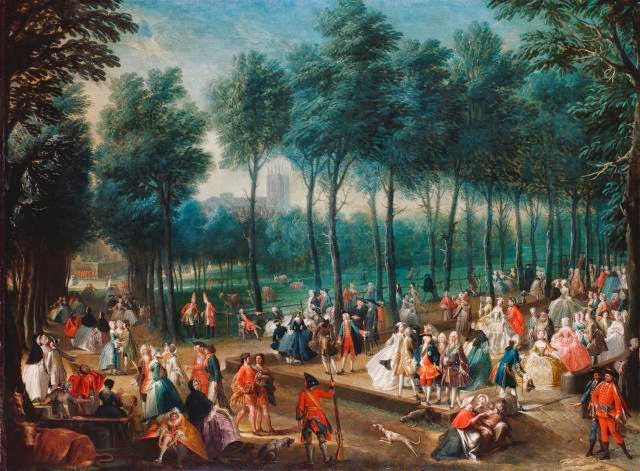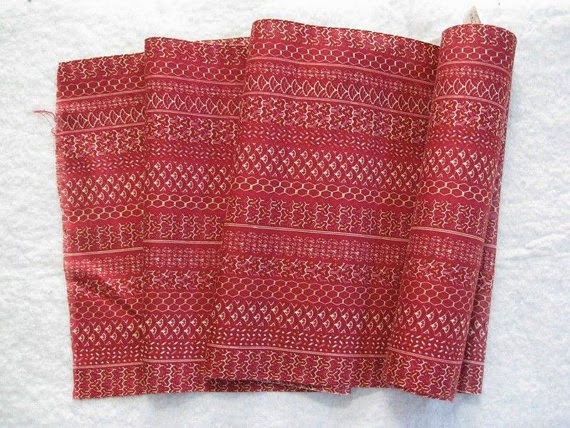I got the Liebster award recently from no less than two different bloggers and though I rarely do awards, I
sabella specifically asked me how I got into blogging and
Fashion Through History asked me the same thing, so I figured I would do a light version and answer the questions.
![]() |
The only picture of my very first pair of stays. It was made after
the Diderot pattern and I made it in green linen with the
boning channels sewn in blue linen thread. By hand.
Unfortunately they fitted me extremely badly and I
couldn't find any other boning than Rigilene |
Whats the reason you decided to start your costuming blog?I'd like everyone to explain why they started blogging and what they have found useful about blogging. Also, any downsides they've found to blogging, any funny stories regarding their blog, and what they might do differently if they were starting a blog now.I have been blogging about my costumes for nine years this month, but to find the reason to why I started w need to get back four more years, back to 2001. Then I did, for the last time, what I had been doing for then years, designing and making the costumes for amateur plays and operas. It was a lot of fun, but it was also a lot of hard work and basically no money at all and I never get to wear any pretty clothes. I wanted to make costumes for myself, but though I had a good grip on fashion history, I know less about historical sewing techniques. I had Janet Arnold’s
Patterns of Fashion books and that was it, so I turned to the Net for help. There were, of course, not a fraction of information then, as there is today, but there were probably a bit more than I remember, because I can only pull three rabbits out of my hat. That was
La Couturière Parisienne, Koshka the Cat, now
Katherine's Dress Site and the now gone, Festive Attyre, though Jen has re-posted some on her blog
with the same name. I learned a lot from these sites as back then I didn’t belong to any group and didn’t know anyone else who made historical clothes. Of course, I did a lot of mistakes anyway, but without online advice, my mistakes would have been far worse.
![]() |
My first 18th century outfit, jacket and petticoat in a blue linen/cotton
blend. The jacket pattern comes from Janet Arnold's Patterns of Fashion
1, but my fitting skills was not very developed. The waist is too long,
you can see the vertical wrinkle at the waistline and though you can't
see it, the neckline was too wide and gaping and the sleeves were
very clumsily inserted. It's too small for me now, but as I still love the
colour and have some fabric left, I plan to pick apart the jacket and
re-make it into one that fits me better. |
Since then I have learned a lot and a lot of it has been from the friends I eventually found in Gustafs Skål, but along with that I have always researched through the web. I first joined LiveJournal in 2004 with a private journal and found that there were a lot of costumers there and my knowledge expanded even further and I started to feel that I wanted to give something back. I had been helped by so many and I wanted to return the favor. I have always tried to share my research and I have always tried to do my research as good as possible.
Since then things have changed considerably. There are now a plethora of wonderful resources online. Museums put out their collections, bloggers write excellent articles, there are sites that put old books online, people can share their work though blogs, Facebook, Deviantart and so on. For me, sharing my costuming online has been a very positive experience. I have learned so much and got to know so many fantastic people.
So why do I blog? Well, for sharing what I do, of course, and I know that there are a few who has been helped of something I have been written. Because I am a compulsive writer who can’t help writing, at the moment I maintain three blogs and write other things as well. And for the warm, fuzzy feeling I get when someone compliments my work, it is always nice to be recognized.
Fashion Through History also asked me a few other questions, so I will answer them as well:
When and how did you get into sewing?![]() |
| My fitting skills have improved. |
I have been sewing since I was about 11 but for a long time it was just a way to means, I loved designing clothes and I loved to have them, so I had to sew them. I didn’t actually start enjoying sewing until I was 30 and really started to make historical costumes.
What was your very first garment (historical or other)? And what did you learned from it?First ever was when I was 11 and I made a circle skirt in a patchwork patterned fabric. I don’t remember what I learned from making it.
Do you have a dream project? And what it is? (Picture?)I want to make a 17th century embroidered jacket and petticoat. Preferably not in monochromes…
Which of your costumes are your favorite and why? (Picture?)Difficult, but I think it is
this 1790’s outfit below. It was such a joy to make and I felt very pretty in it. It’s too small for me now and I mourn that!
What will be your next big project?I’m working on Gustaf III’s national gown right now, but my next planned big projects are a mid-17th century outfit for my husband and then a mantua c. 1700.
What part of costuming do you enjoy the most (the planning, patternmaking, sewing, details etc.)?Hard to say, but planning, making the final touches and being finished are probably the best parts.
And what part would you rather not do?Cutting out pattern pieces and do zippers and buttonholes.
Do you have a costuming role model or muse (historical, fellow blogger or other)?![]() |
| 1790-s outfit, velvet jacket with a silk taffeta petticoat. |
Not really. The costuming collective online and my friends all give me inspiration, but I don’t have a particular person. Historically speaking it is all those unsung artist who anonymously have created such beautiful clothes, embroideries and lace that are artwork in themselves.
What is your best advice for anyone wanting to get into historical costuming?Do your research. The more you learn about your chosen period, the easier it gets to find what you really want to do. Do your research even if you don’t aim to make something historically correct, because it is never wrong to know how you deviate and why, instead of just winging it out of laziness.
























































_People_in_the_park.jpg)























++A+Young+Woman+1525.jpg)










































.jpg)






























